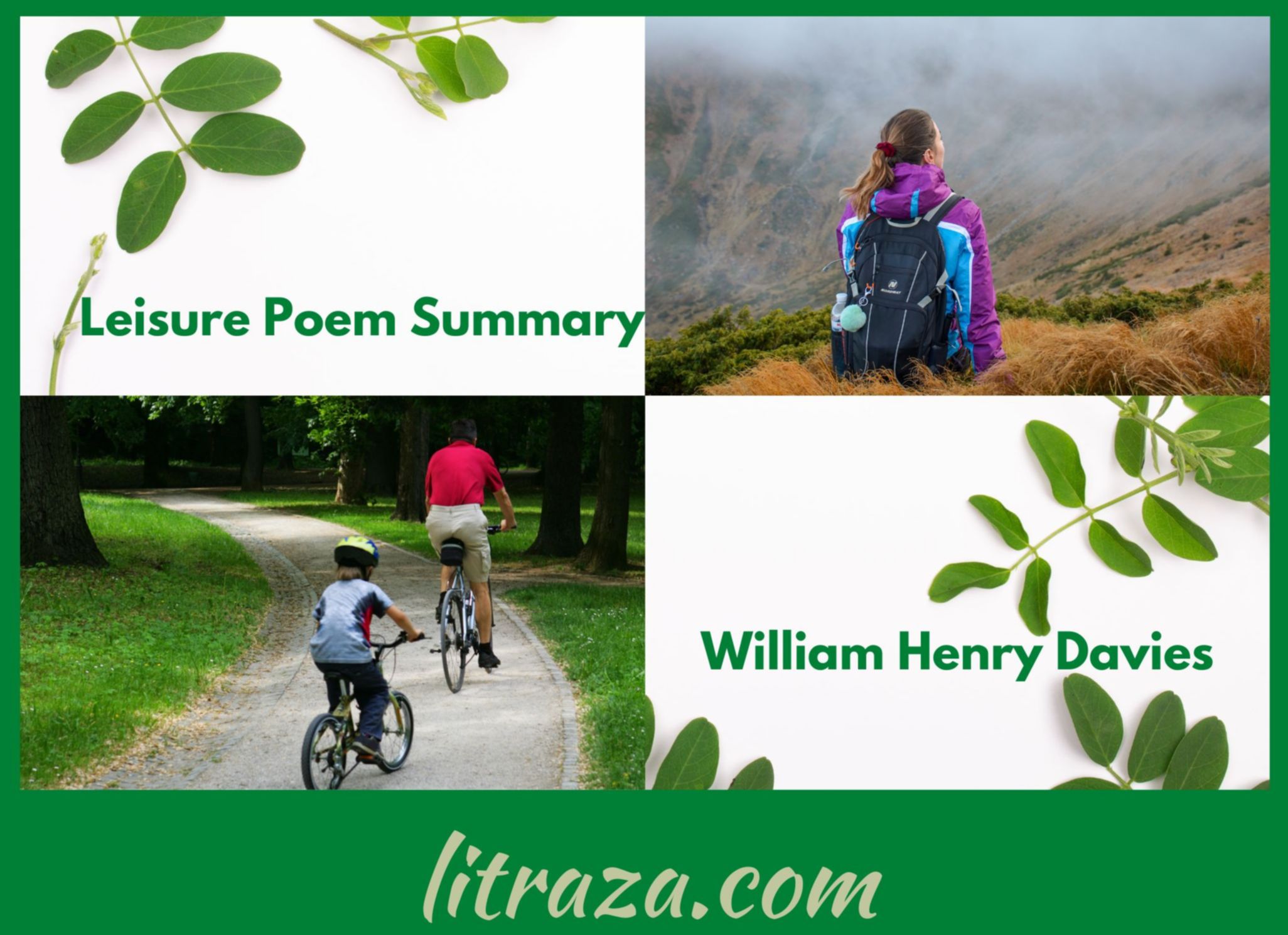Introduction
Kubla Khan by ST Coleridge is the finest instance of the purest romantic poetry. The poem is an exhibition of the poet’s unrivalled power of imagination. It also reflects Coleridge’s profound interest in supernatural, metaphysical, and magical elements. Critics refer to Kubla Khan by ST Coleridge as one of the representative poems of the Romantic era. The poem is a part of the syllabi of almost every educational institution offering a course in Romantic poetry. This article, Kubla Khan by ST Coleridge – Summary Analysis Questions, elaborates on different aspects of this poem. It will help students, teachers, and lovers of poetry understand this poem in a better way. They will enjoy reading this article as much as they enjoy reading this poem. The article will enhance their insight into the artistic aspects of the poem. Primarily, teachers and students will find it handy for academic purposes.
A Brief Biography of ST Coleridge
Samuel Taylor Coleridge was born in Ottery Saint Mary, UK, on October 21, 1772. His repute in literary circles rests not only on his poetic talent but also on his expertise in criticism. He was a philosopher, theologian, and political thinker also. Coleridge, with his friend poet William Wordsworth, founded the Romantic Movement. The publication of their collection of poetry Lyrical Ballads in 1798 marks the dawn of English Romanticism. His poem, The Rime of the Ancient Mariner, won praise for its Gothic element and conversational tone. He was also a part of a group of poets known as Lake Poets. Coleridge had rheumatic fever in his childhood which left him reliant on laudanum as a treatment. According to him, he wrote Kubla Khan under the influence of laudanum. Biographia Literaria is his famous work in prose. His criticism of Shakespeare enjoys a lasting impact on critics. Coleridge breathed his last in London, UK, on July 25, 1834.
Background of the Poem Kubla Khan by ST Coleridge
Purchas his Pilgrimage by Samuel Purchas inspired ST Coleridge to compose the poem, Kubla Khan. Samuel Purchas, an Anglican cleric, wrote accounts of many travellers. Purchas his Pilgrimage (1613) contained a reference to the palace of the Mongol emperor Kubla Khan in Xanadu. While reading this part of the book, Coleridge fell asleep under the influence of laudanum. Coleridge believed that he composed this poem in a dream. Therefore, he also called it ‘A Vision in a Dream’. He wrote these 54 lines in 1797. Coleridge claimed that he had hundreds of lines on the subject in his dreams, but he was disturbed by someone. Therefore, he could not remember all of them. So, he kept the poem, which he called a fragment, limited to friendly readings. In 1816, convinced by Lord Byron, he published it along with two other poems, Christabel and The Pains of Sleep.
Text of the Poem Kubla Khan by ST Coleridge
In Xanadu did Kubla Khan
A stately pleasure-dome decree:
Where Alph, the sacred river, ran
Through caverns measureless to man
Down to a sunless sea.
So twice five miles of fertile ground
With walls and towers were girdled round;
And there were gardens bright with sinuous rills,
Where blossomed many an incense-bearing tree;
And here were forests ancient as the hills,
Enfolding sunny spots of greenery.
But oh! that deep romantic chasm which slanted
Down the green hill athwart a cedarn cover!
A savage place! as holy and enchanted
As e’er beneath a waning moon was haunted
By woman wailing for her demon-lover!
And from this chasm, with ceaseless turmoil seething,
As if this earth in fast thick pants were breathing,
A mighty fountain momently was forced:
Amid whose swift half-intermitted burst
Huge fragments vaulted like rebounding hail,
Or chaffy grain beneath the thresher’s flail:
And mid these dancing rocks at once and ever
It flung up momently the sacred river.
Five miles meandering with a mazy motion
Through wood and dale the sacred river ran,
Then reached the caverns measureless to man,
And sank in tumult to a lifeless ocean;
And ’mid this tumult Kubla heard from far
Ancestral voices prophesying war!
The shadow of the dome of pleasure
Floated midway on the waves;
Where was heard the mingled measure
From the fountain and the caves.
It was a miracle of rare device,
A sunny pleasure-dome with caves of ice!
A damsel with a dulcimer
In a vision once I saw:
It was an Abyssinian maid
And on her dulcimer she played,
Singing of Mount Abora.
Could I revive within me
Her symphony and song,
To such a deep delight ’twould win me,
That with music loud and long,
I would build that dome in air,
That sunny dome! those caves of ice!
And all who heard should see them there,
And all should cry, Beware! Beware!
His flashing eyes, his floating hair!
Weave a circle round him thrice,
And close your eyes with holy dread
For he on honey-dew hath fed, And drunk the milk of Paradise.

Summary of the Poem Kubla Khan by ST Coleridge
Introduction
Kubla Khan by ST Coleridge is the poem that strengthened the poet’s stature as a representative of the Romantic era. The poem is an expression of Coleridge’s mastery of delineation and the height of imagination. Metaphysical and supernatural elements add to the beauty of this poem. Coleridge transports the reader into the realm of mystery and magic. He makes exceptionally good use of his imagination and impels the reader to ‘a willing suspension of disbelief’.
Description of the Landscape
In Kubla Khan, Coleridge describes the grandeur of Kubla Khan’s palace in Xanadu. He depicts the landscape around the palace in a very romantic manner. Kubla Khan commanded the construction of a stately pleasure dome in the sacred land of Xanadu. In this land, the sacred river Alph flowed through measureless caves and merged into a sunless sea. The project covered an area of ten miles. It was full of fascinating gardens through which streams of sparkling water flowed. These gardens were full of trees and plants that bore fragrant flowers. There were forests as ancient as hills.
Description of Romantic Chasm
Coleridge describes a hill covered with cedar trees. There was a chasm across this hill. The mystery surrounding this cavity was bewitching. From this gorge, a spring of crystal clear water flowed with a spasmodic gush. As the water flowed, it looked as if the earth were gasping heavily. This geyser thus formed flings pebbles as it erupts. The water of the sacred river propelled through this chasm. The river flowed for five miles before it merged into the sea.
Sinister Feelings about the Chasm
Coleridge presents the scene of the chasm so mysteriously that the reader develops a sinister feeling about this place. It looked like a place where a deranged virgin had wept bitterly for her supernatural lover. Her wails sounded in the noise created by the geyser erupting from the chasm.
The Voices of Kubla Khan’s Ancestors
In the confusion of sounds around this spring, Kubla Khan heard the voices of his ancestors. They warned Kubla Khan of the threats of forthcoming wars. The mention of these voices adds to the supernatural and metaphysical elements of the poem.
The Grandeur of the Pleasure Dome
Kubla Khan’s pleasure dome is so grand that its reflection is visible halfway on the waves of the river. The mingling of the sound of the waves of the river and the fountain gushing from the chasm creates music. Coleridge calls the sunny pleasure dome and the icy caves a sight of miraculous beauty.
Coleridge’s Dream and Desire
Coleridge shares with the readers a dream in which he saw an Abyssinian maiden playing captivating music on a dulcimer. She sang a mesmerizing song in her native language. Her song sounded to the poet as if it were a charm. The poet desired to recreate this sound and song. He believed that if he could do so, he would build the same pleasure dome in the air. It would attract the sight of the onlookers and they would be left spellbound. The spectators would also feel a strange fright looking at the poet in a state of frenzy. They would surround the poem in three circles and avoid looking at him. They would take him for an avatar who had eaten heavenly honey and drunk the milk of Paradise.
Conclusion
The imagery, diction, and structure of the poem Kubla Khan by ST Coleridge are typical of the Romantic age. The description is so vivid and lucid that the reader feels transported to Xanadu.
Important Questions
Q1: Discuss Kubla Khan by ST Coleridge as a representative poem of the Romantic era.
Q2: What are the major themes of the poem Kubla Khan by ST Coleridge?
Introduction
Kubla Khan by ST Coleridge is a celebration of romantic creativity. The poem stands out as a document that covers all the features prescribed in the Romantic manifesto. To understand the poem and develop an awareness of its major themes, one should know the traits of Romanticism.
Major Traits of Romanticism
Romanticism reigned the literary horizons during the eighteenth and nineteenth centuries. As a movement in art and literature, Romanticism stood in revolt against Neoclassicism. During the late seventeenth to mid-eighteenth centuries, Neoclassicism remained in vogue. It laid stress on moderate emotions, reason, organization, form, flamboyant diction, and precision. As a result, the literary works of this era were meant for intellect, and not for emotions. Wit had supremacy over imagination. Satire and didacticism were major objectives of works of literature.
Romanticism, however, accentuated imagination, subjectivity, simple diction, spontaneity, love of nature, and fascination with beauty. Romantic poets were also inspired by the lifestyle of the middle ages. They were interested in myths and mysticism. There was a transcendental urge among the poets to seek deeper beauty and unfold the unknown reality. They preferred content to form, emotion to reason, and spontaneity to precision. This poem contains all these features.
Kubla Khan – A Romantic Poem
Kubla Khan by ST Coleridge is a Romantic poem in every respect. It is a great work of the poet’s imagination. Coleridge had only read about the legendary pleasure dome of Kubla Khan. He never visited the place. But he delineated it using his powerful imagination. The pictorial quality of the poem is another feature common to all Romantic poets. The reader cannot neglect the love of nature in Coleridge’s description of the river, geyser, forests, and icy caves. The fascination with the supernatural and mysterious elements is palpable in the description of the song of the Abyssinian maiden. The same can be felt in the voices of Kubla Khan’s ancestors. The reader also enjoys the spontaneity and rhythm of the poem. The urge for creativity manifests itself in Coleridge’s desire to build the pleasure dome in the air. These features make it a representative poem of the Romantic era.
Major Themes of the Poem
Kubla Khan by ST Coleridge covers the themes associated with the guiding principles of Romanticism. It deals with the power of imagination, the urge for creativity, and the impact of nature. It also focuses on the desire to turn a dream into reality.
The Power of Imagination
The Romantics believed that the poet had a prophetically powerful imagination. It empowered him to transcend the limits of time, space, and territory. He could envision and relate what a common man could not. In this poem, we find the same power of imagination exercised by ST Coleridge. Through his power of imagination, he created an unbelievably believable picture of the landscape of Xanadu. Even if the reader has never been to this place, he can imagine its grandeur and grace.
The Urge for Creativity
The urge for creativity is closely connected with the power of imagination. The poets of the Romantic age believed more in creation than in justification. It added a sense of individuality and subjectivity to their works. In Kubla Khan by ST Coleridge, this urge for creativity exhibits itself in the content of the poem. Coleridge made effective use of his imaginative faculty to create an impeccable image of the pleasure dome in Xanadu. He also expressed his desire to create the same image in the air with the power of magic.
The Impact of Nature
Nature for the Romantics was the inspiration for poetry. Coleridge’s depiction of the natural beauty of the land of Xanadu reflects how much he loved nature. In his description, he included forests, ancient trees, the river Alph, icy caves, and the spring erupting from the chasm. He also described gardens, winding water channels, and hills covered with cedar trees. It seems that the main objective of the poet was to pay tribute to nature for its beauty and diversity.
The Desire to Turn Dream into Reality
Coleridge claimed that he composed the poem, Kubla Khan, in a dream. It means that he saw Kubla Khan’s pleasure dome in his dream. The composition of the poem shows that he had the desire to turn his dream into reality. On the physical level, it is impossible. Therefore, he used his imagination and transcendental faculty to create it in verse. It reflects the Romantic belief that the imagination consoles and soothes by making possible the achievement of the unachievable.
Conclusion
Kubla Khan by ST Coleridge is a masterpiece of poetic genius. It has so many aspects that an article of this length is not sufficient to cover all of them. However, the topics covered here will certainly help readers develop a better understanding of this poem.




[…] Looking for Kubla Khan by ST Coleridge!!!! […]